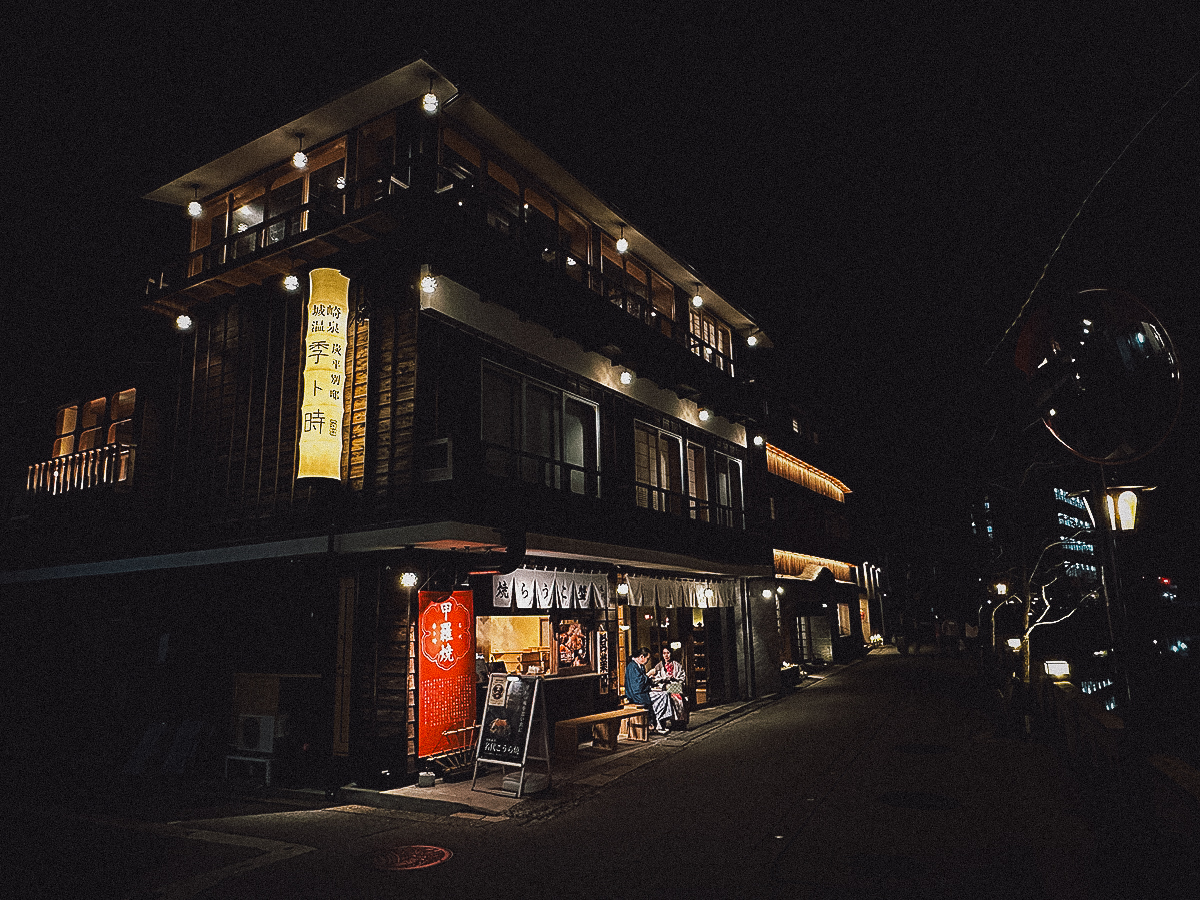SUMMARY HIGHLIGHTS
- All seven public bathhouses in Kinosaki Onsen are tattoo-friendly.
- Travel to Kinosaki Onsen is covered by the Kansai Wide Area Pass.
- Matsuba Crab, a prized delicacy, is typically in season from November until March.
When we share our favorite travel memories with others, we often describe how beautiful a place is. But I think our fondest memories of places are shaped less by what we see, and more by how they make us feel. That often indescribable feeling is what I remember when I think of Kinosaki Onsen.
My first visit to this atmospheric onsen town was nearly ten years ago, on a press trip to northern Kyoto and Hyogo prefectures. We were taken on a tour of Amanohashidate before making a quick stop at Kinosaki Onsen. I had been to onsen towns in Japan before, but never to one quite like this. It was like walking onto the set of an Edo period film, but only this was real.
Traditional wooden buildings, none taller than two or three stories, lined the streets. The gentle Otai River shimmered beneath stone bridges and willow trees. The town was so well-preserved that it felt suspended in time, with the only signs of the present being the Japanese compacts navigating its narrow streets.
But most striking of all were the people. Like actors in a play, couples and families were dressed in yukatas and wooden geta sandals. The air resonated with the curious “click-clack” of wood on stone – a rhythmic soundtrack of onsen-goers making their way from one hot spring to the next. It was pure magic.
In that moment, Kinosaki Onsen wasn’t just a place – it was a feeling, a feeling that I was eager to experience again on this return trip.
VISIT KINOSAKI ONSEN QUICK LINKS
To help you plan your trip to Kinosaki Onsen, I’ve put together links to recommended hotels and travel-related services here.
HOTELS
Top-rated hotels and ryokans in Kinosaki Onsen
OTHER SERVICES
- Travel Insurance (non-US residents get 5% off)
- JR West Kansai Wide Area Pass
- Japan Rail Pass
- Japan eSIM
GUIDE TABLE OF CONTENTS
KINOSAKI ONSEN AT A GLANCE
Kinosaki Onsen is a hot spring town in northern Hyogo Prefecture, near the coast of the Sea of Japan. It’s been a hot spring town since the 8th century and is considered one of the top onsen destinations in the Kansai region.
Apart from its traditional feel, what makes Kinosaki Onsen especially attractive is its seven soto-yu or public bathhouses. Visitors to Kinosaki Onsen change into yukata (casual cloth kimono) and geta (wooden clogs) and participate in soto-yu meguri – the practice of hopping from one onsen to the next.
Thanks to its relaxed tattoo policy, Kinosaki Onsen is one of the most accessible and welcoming onsen towns in Japan. Tattoos are still considered taboo in Japanese culture and are strictly prohibited in many bathhouses. In Kinosaki Onsen, all seven soto-yu are tattoo-friendly.
BEST TIME TO VISIT KINOSAKI ONSEN
Like many destinations in Japan, spring and fall are ideal times to visit Kinosaki Onsen thanks to milder weather and the promise of sakura and autumn leaves.
Personally, my favorite season to soak in an onsen is winter. Not only is the snowfall beautiful, but the cold weather makes bathing in hot springs extra appealing. The winter months are also peak season for Matsuba crab in the San’in coastal region[1]. A prized delicacy, Matsuba crab is the term given to male snow crabs caught from the Sea of Japan.
Because hot springs are the main attraction in Kinosaki Onsen, the least pleasurable time to visit is arguably summer. For some people, the heat and humidity may make bathing in an onsen less appealing.
TRAVELING TO KINOSAKI ONSEN
Kinosaki Onsen is easily accessible by JR train from Osaka or Kyoto. From Osaka Station, you can get to Kinosakionsen Station in under 3 hours. From Kyoto Station, the journey will take around 2.5 hrs.
A few rail passes cover travel to Kinosaki Onsen, including the Kansai Wide Area Pass and the nationwide JR Pass.
WHERE TO STAY IN KINOSAKI ONSEN
Kinosaki Onsen isn’t very big so staying in the town center will put you within walking distance of all seven bathhouses. If you have reservations about going to a public bathhouse, then you can choose a ryokan (traditional Japanese inn) with a private bath.
You can check Booking.com or Agoda for accommodations in Kinosaki Onsen. Here are a few highly-rated ryokans and hotels in town.
THINGS TO DO IN KINOSAKI ONSEN
Go Onsen Hopping
Participating in soto-yu meguri is the main reason why people visit Kinosaki Onsen. Hopping from onsen to onsen in a yukata and geta sandals is a fun cultural experience that remains one of the most memorable things I’ve done in Japan.
If you’ve never been to a public bathhouse, then feeling apprehensive about being naked with strangers is natural. I felt extremely uneasy at my first soto-yu. But I quickly got over it and now feel just as relaxed as the locals.
Admission to each of the seven mystic onsens is JPY 800 for adults and JPY 400 for children ages 12 and below. If you’d like to visit more than one onsen, then you may want to purchase a yumepa or one-day pass from any of the bathhouses. It’ll give you access to all seven soto-yu for just JPY 1,500 (April 2025).
If you’re staying the night, then you can get a yumepa from your ryokan at a reduced rate. Some may even provide them to guests for free.
Listed below are the seven mystic onsens of Kinosaki Onsen. Every bathhouse is gender-separated so I’m assuming the facilities are similar for both genders.
GOSHONO-YU
According to my ryokan, Goshono-yu is the most popular bathhouse in Kinosako Onsen thanks to their large outdoor bath. She advised me to go here first because it gets very crowded later in the day and in the evening.
If you’d like to avoid the crowds, then the Visit Kinosaki website has a nifty feature that shows you how full the bathhouses are at any given time.
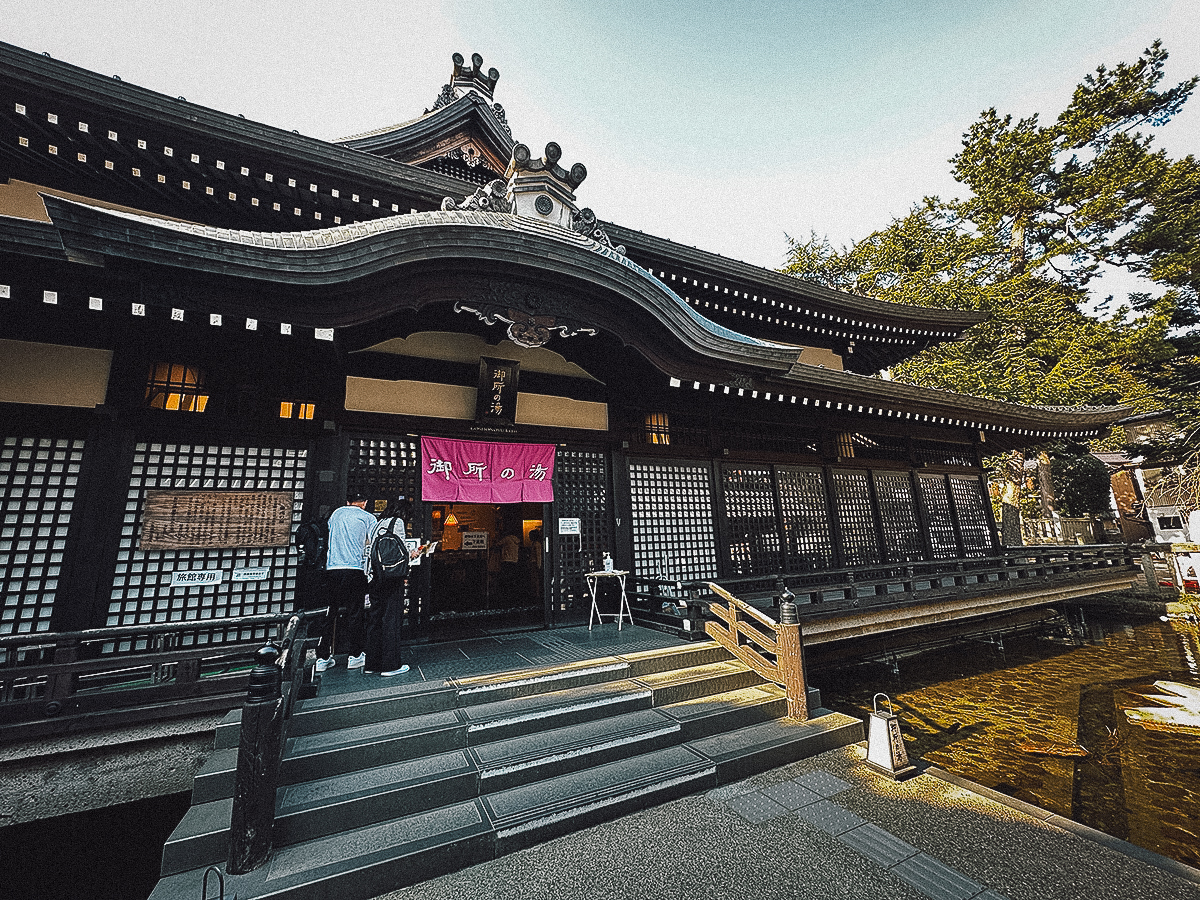
Operating Hours: 7AM-11PM
Closed on: Thursdays
ICHINO-YU
Ichino-yu is another bathhouse that my ryokan specifically mentioned to me. It features two indoor baths – one in standard tile and another that’s made to look like a cave.
The cave bath is interesting but as you’d expect, it’s popular and gets quite crowded. I suggest prioritizing this bathhouse as well.
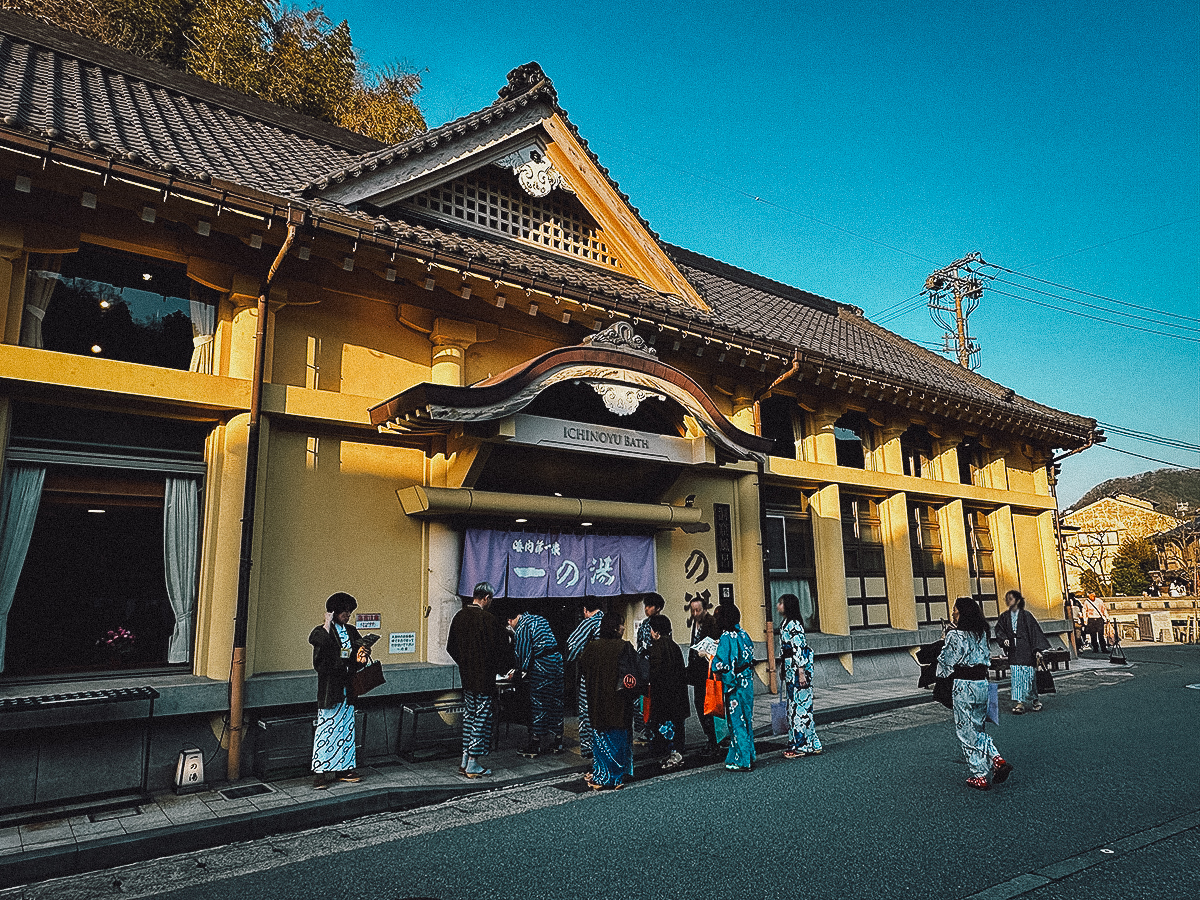
Operating Hours: 7AM-11PM
Closed on: Wednesdays
KONO-YU
Kono-yu was one of my favorite bathhouses at Kinosaki Onsen. It has two baths – one indoors and another more natural-looking pool outdoors. It’s the farthest bath from the center of town so it doesn’t seem to get as crowded as Goshono-yu and Ichino-yu.
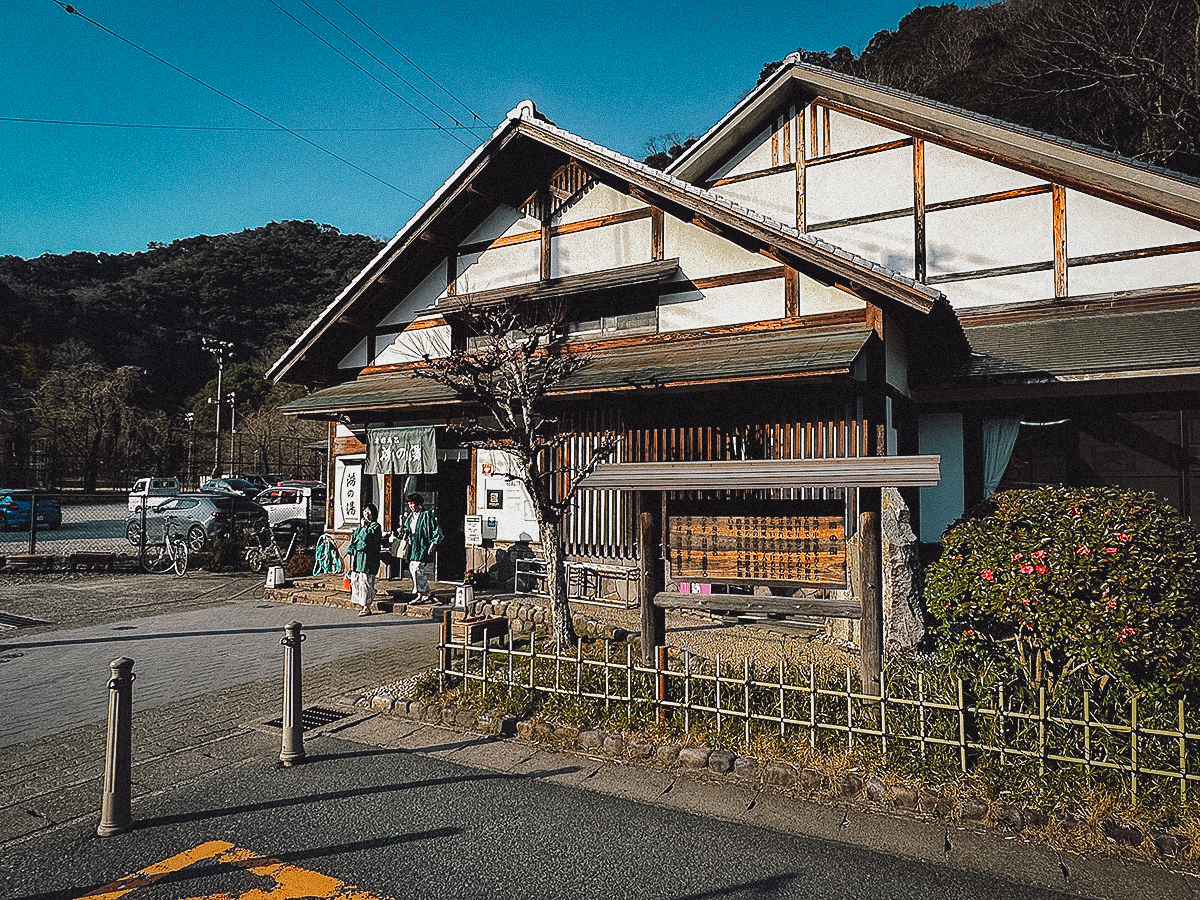
Operating Hours: 7AM-11PM
Closed on: Tuesdays
YANAGI-YU
Yanagi-yu is the smallest of the seven onsens and features just one indoor bath.
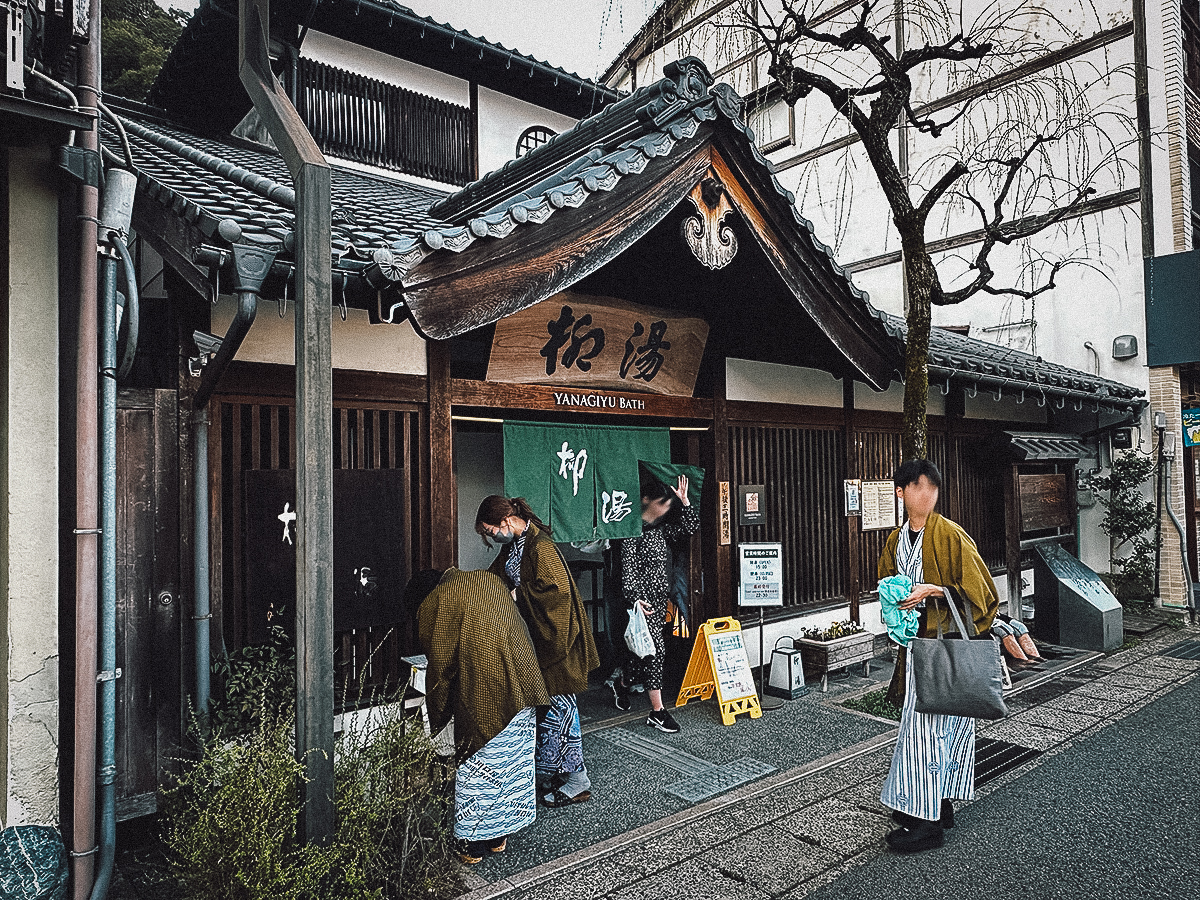
Operating Hours: 3-11PM
Closed on: Thursdays
JIZO-YU
Jizo-yu features one large indoor bath and a smaller bath for children.
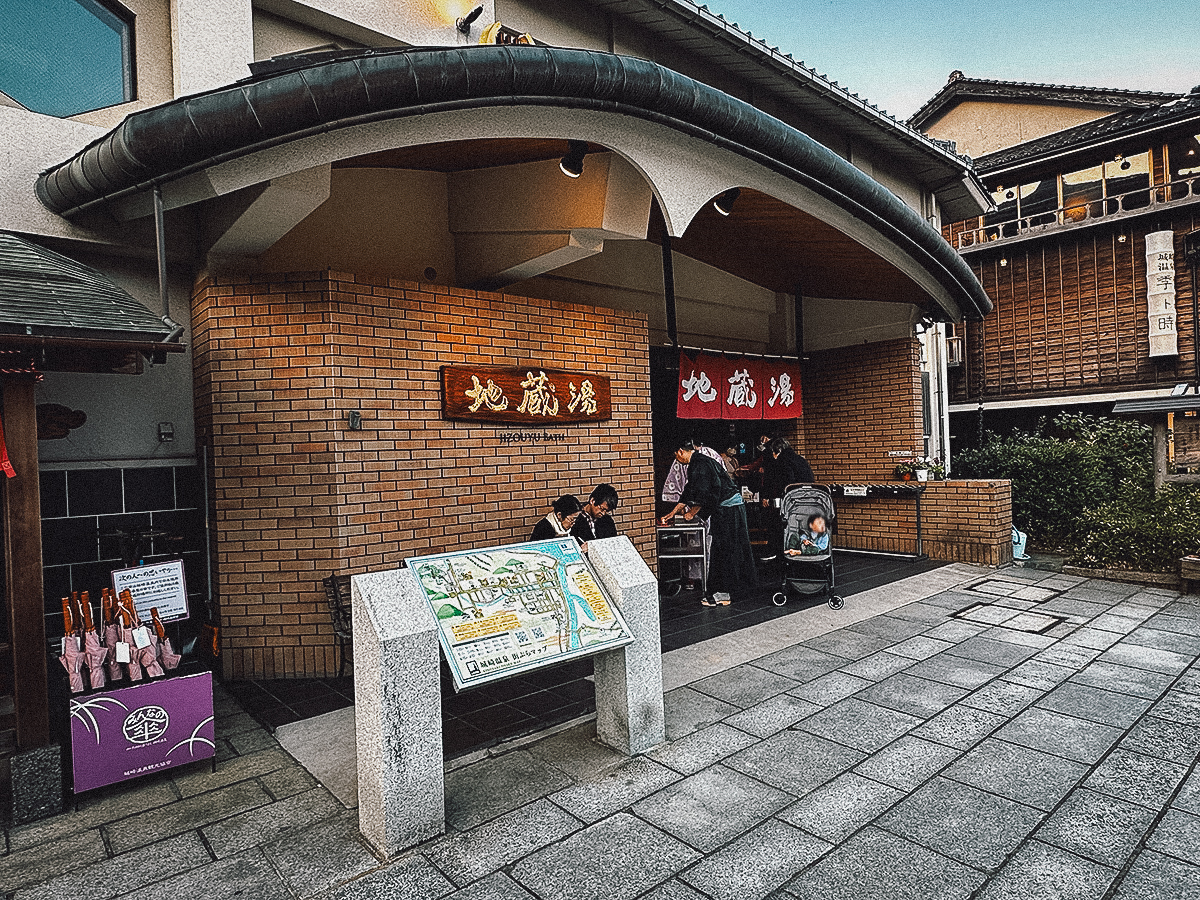
Operating Hours: 7AM-11PM
Closed on: Mondays
MANDARA-YU
Mandara-yu is said to be the oldest of the seven bathhouses in Kinosaki Onsen. It features one large indoor bath and two single-person ceramic outdoor baths.
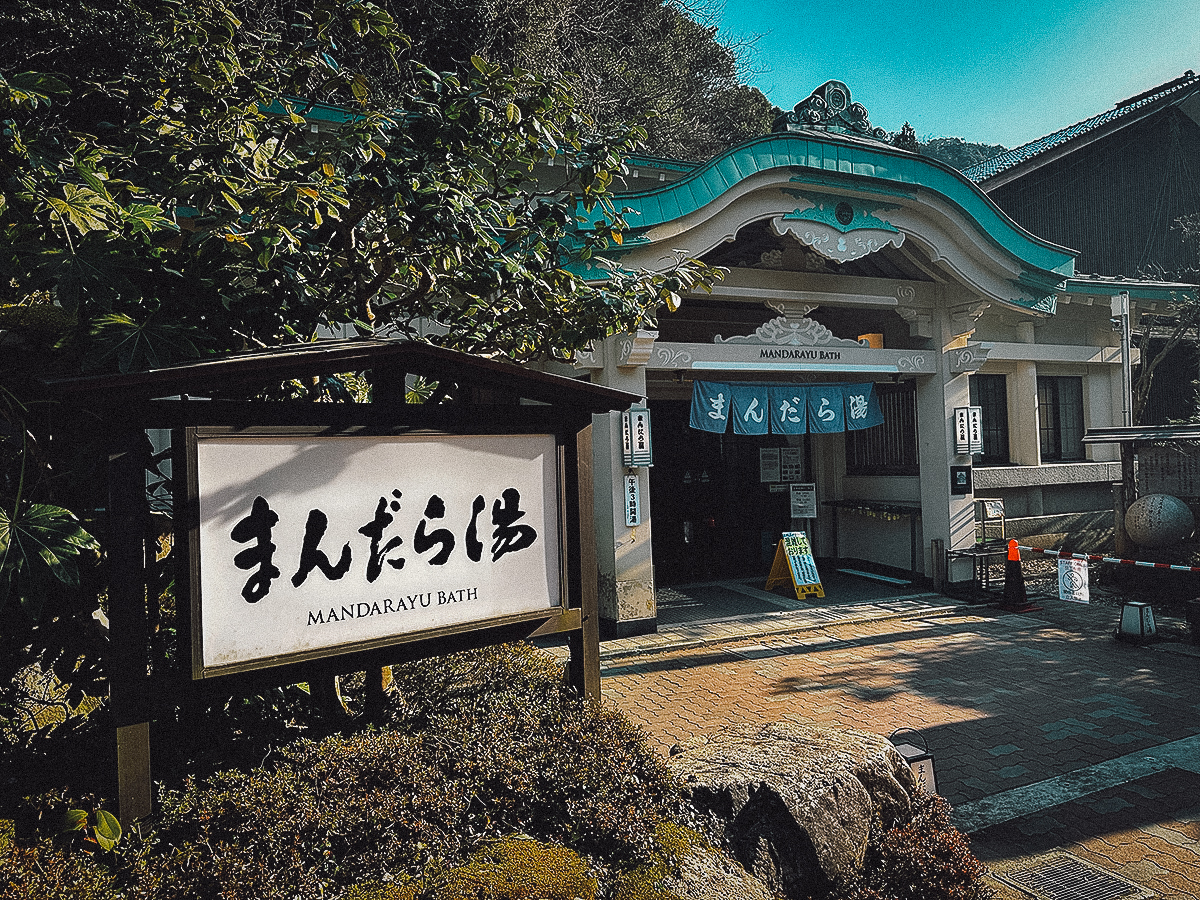
Operating Hours: 3-11PM
Closed on: Wednesdays
SATONO-YU
This picture was taken on my first visit in 2017. Unfortunately, Satono-yu has been closed indefinitely for renovations since April 2024. According to the Visit Kinosaki website, it featues a Japanese bath and a Turkish-style bath that are regularly rotated between men and women.
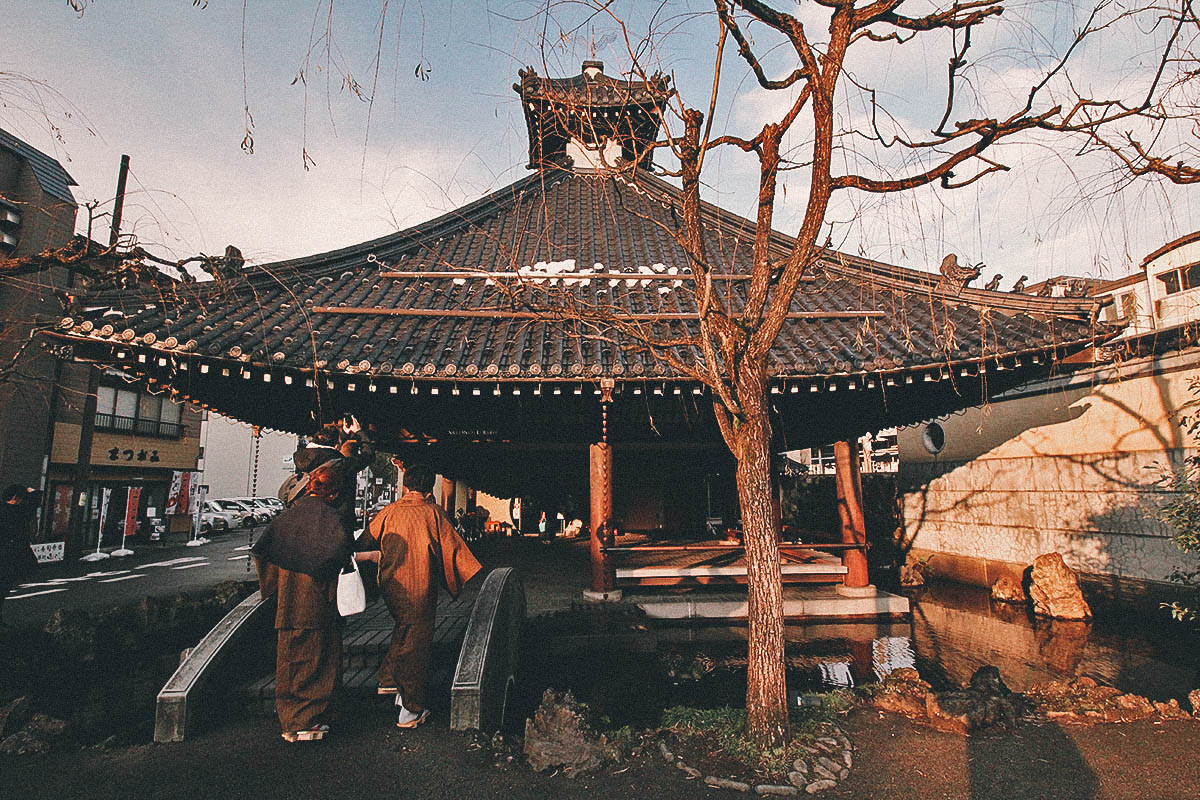
Operating Hours: 1-9PM
Closed on: Mondays
To make your soto-yu meguri even more fun, you can purchase a stamp book from the tourism office across the street from Kinosakionsen Station. It’s a fold-out map with blank spaces for stamps from each of the seven soto-yu.
After every bathhouse, you can commemorate your visit with a unique stamp. It costs almost nothing and makes for a nifty Kinosaki Onsen souvenir.
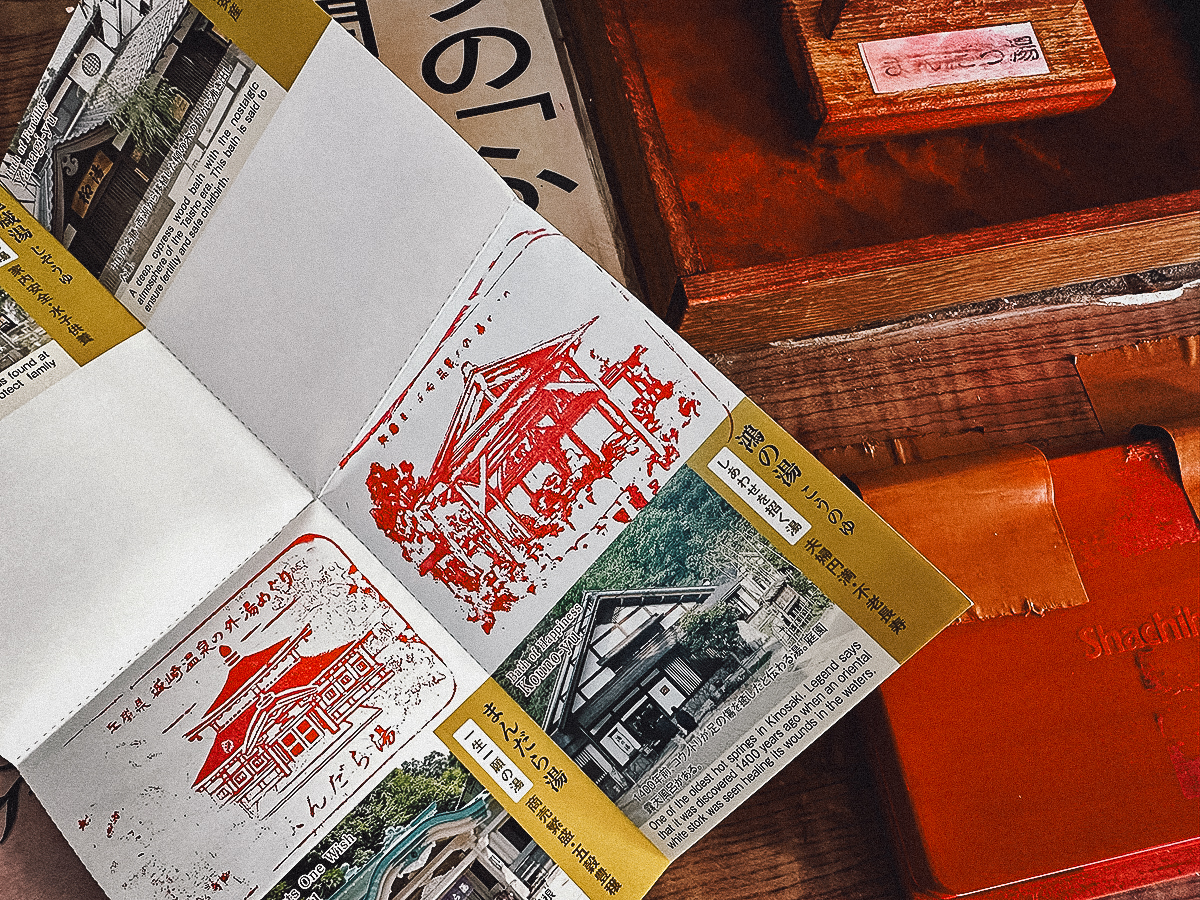
Soak Your Feet in an Outdoor Foot Bath
I didn’t do this but there are a few free foot baths you can use around town. If you’re only visiting Kinosaki Onsen for the day and don’t feel like entering any of the bathhouses, then these free foot baths are a great way to enjoy the town’s rejuvenating hot spring waters.
Visit Onsenji
If you have time to do some sightseeing, then you may want to pay a quick visit to Onsenji. In the old days, people were required to visit this temple before being allowed to use any of the town’s baths[2].
Located on the side of a mountain, I hiked up to Onsenji but you can also take a ropeway to the temple. There’s a small museum of Buddhist relics nearby as well.
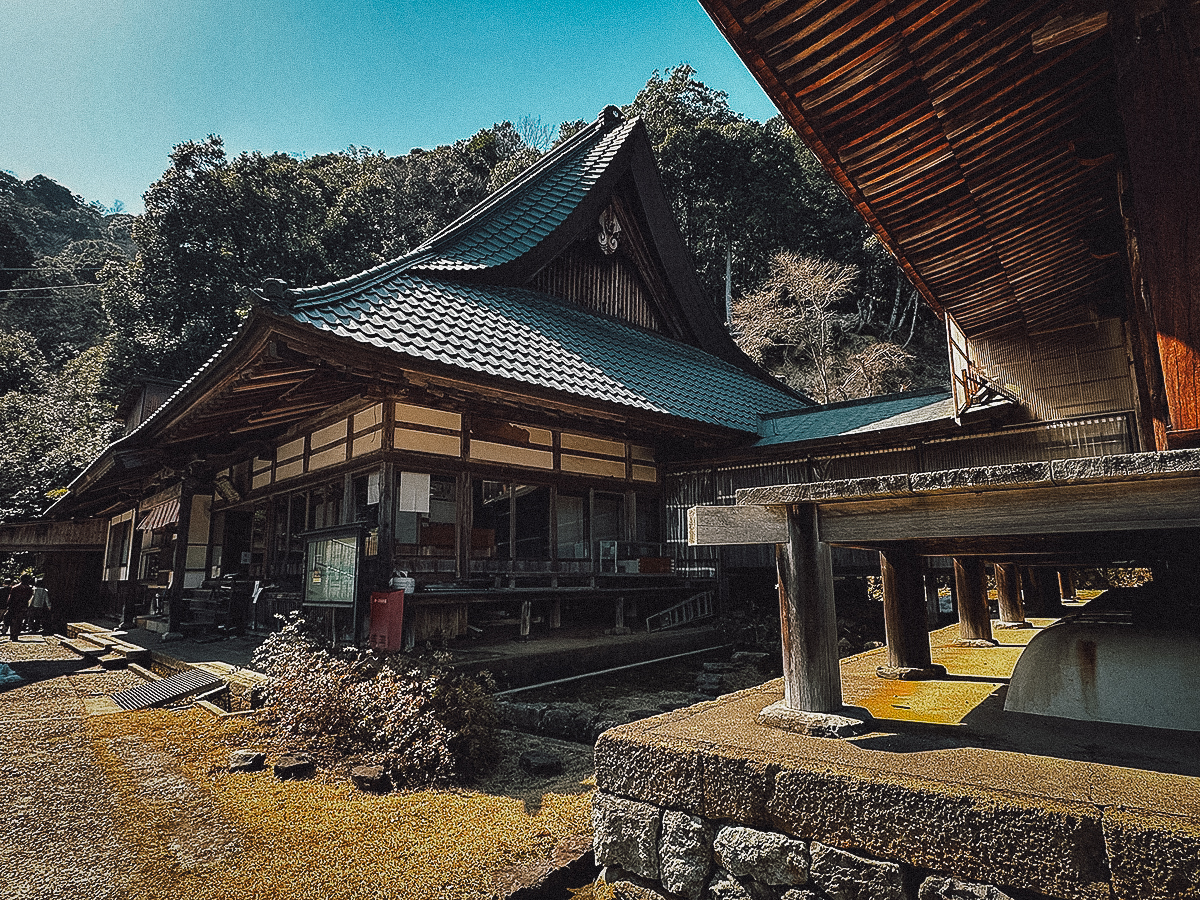
Feast on Matsuba Crab
If you’re a crab person like I am, then you’ll enjoy visiting Kinosaki Onsen in winter. From around November until March, you can feast on Matsuba crab, a prized delicacy from the San’in coastal region of Japan.
Matsuba crab is the term given to male snow crabs caught from the Sea of Japan. Known for their sweet and succulent meat that’s best enjoyed grilled or boiled, what makes these crabs a sought-after specialty is the plankton-rich environment that’s said to give them a richer flavor[3].
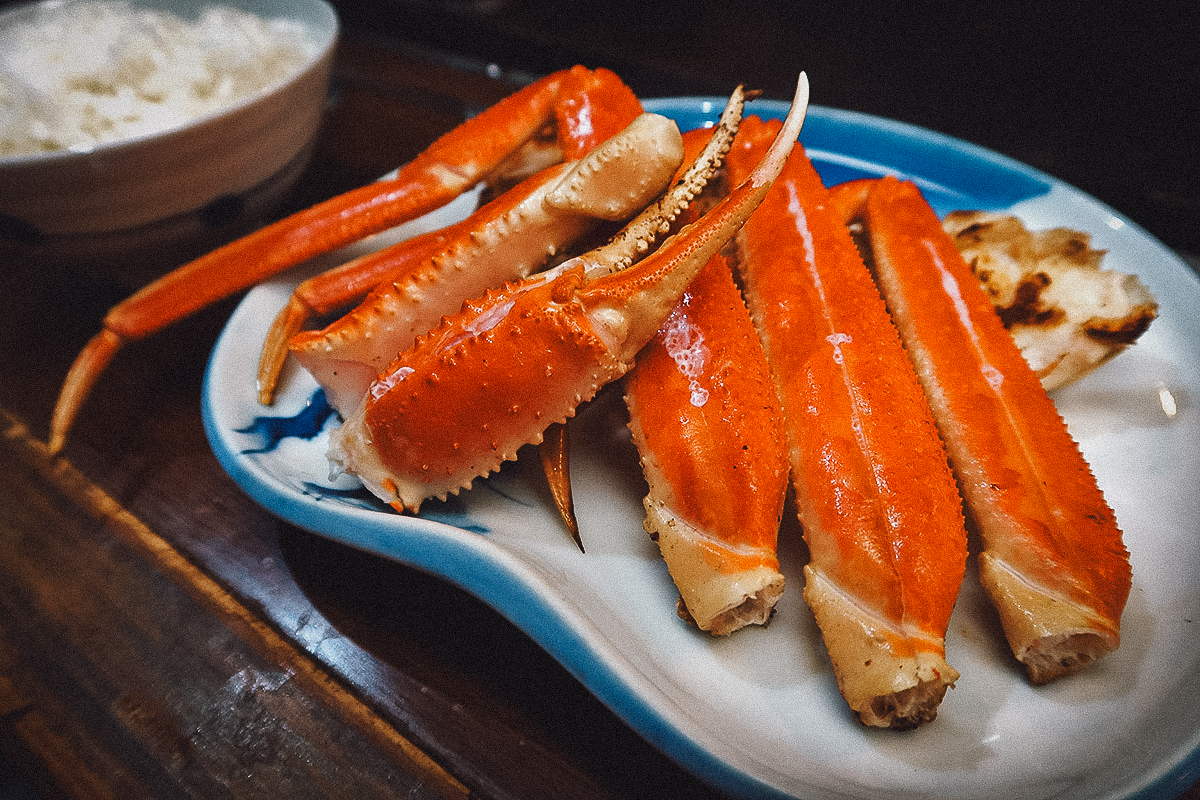
Enjoy Onsen Eggs at Kinosaki Motoyu
I’ve been to a few onsen towns in Japan and one thing is certain – you’ll find onsen eggs simmering somewhere. At Kinosaki Onsen, you can enjoy onsen eggs near Kinosaki Motoyu, a large rock with hot spring water continuously flowing out of it. It’s described as the original source of the town’s hot springs.
Located near the Kono-yu bathhouse, you can buy raw eggs from the Chaya gelato shop and boil them in Kinosaki Motoyu’s hot spring waters. If you aren’t in the mood for onsen eggs, then perhaps you can enjoy gelato instead or soak your feet in the free foot bath nearby.
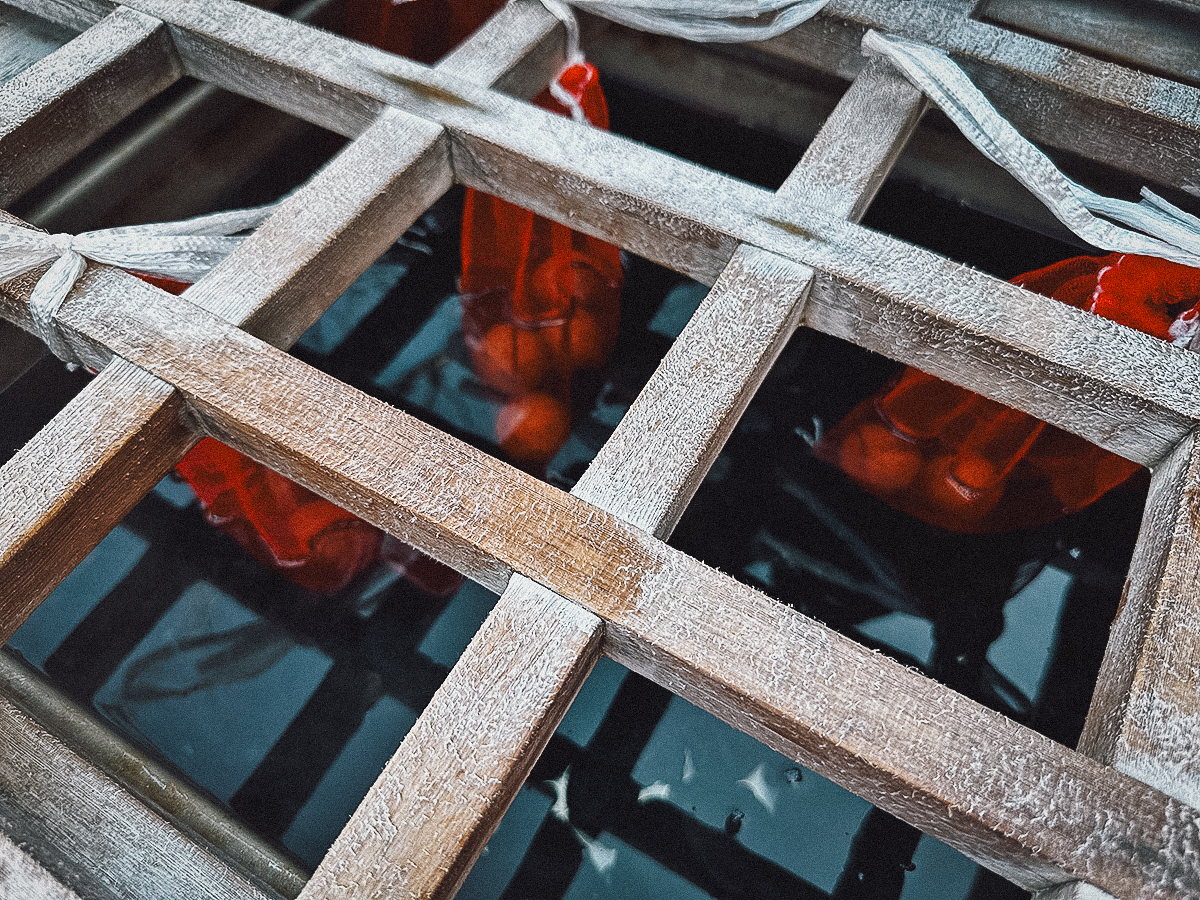
Go for a Nighttime Stroll in a Yukata and Geta Slippers
Soaking in the hot springs is fun, but what makes a trip to Kinosaki Onsen truly memorable is the chance to walk from onsen to onsen in yukata and geta. Kinosaki Onsen is beautiful at any time of the day, but it becomes a special kind of magical at night.
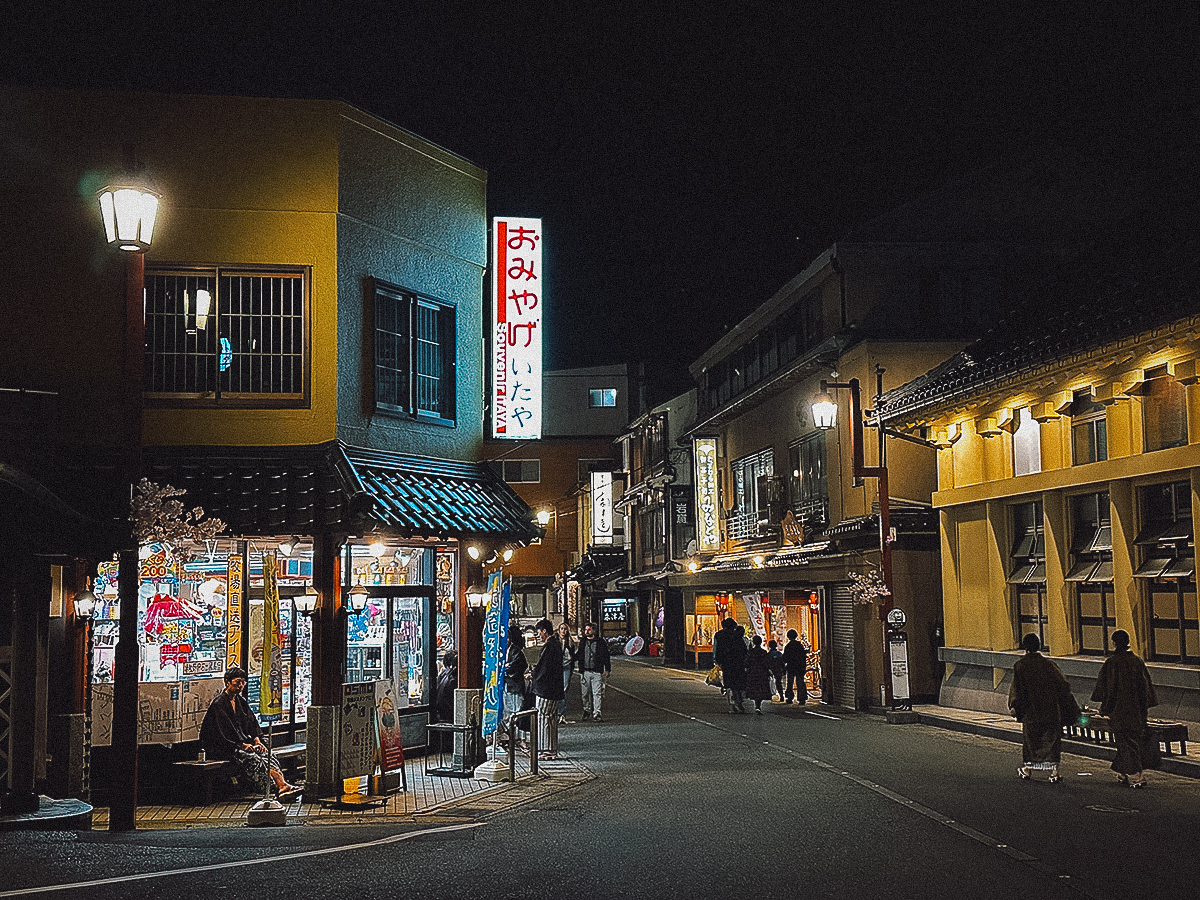
ONSEN ETIQUETTE
If it’s your first time going to a public bathhouse in Japan, then there are a few things you need to know[4]. These are some of the most important but please check the Visit Kinosaki website for a more thorough article on Japanese onsen etiquette.
- Baths are gender-separated and color-coded – typically blue for men and red for women. Don’t go into the wrong one!
- You’ll need to be completely naked when you enter the bath area. The only items you can bring with you are your locker key (wear this on your wrist or arm) and a small towel. Ryokans will typically provide you with a large towel and a small towel.
- This should be obvious but photography is strictly prohibited in the changing room and bath area. Respect everyone’s privacy and keep your phone and/or camera in your locker.
- After entering the bath area, you’re expected to shower and scrub yourself first. Do that while sitting on the small stool and be sure to rinse off any shampoo and suds thoroughly before slipping into the hot bath.
- If you’re visiting multiple onsens, then you’ll only need to shower and scrub yourself at the first onsen. You can just give yourself a quick rinse before entering any subsequent hot baths.
- Don’t submerge your head or your towel in the hot bath. Many people fold their towel and keep it on top of their head. If you have long hair, you should tie it up so it doesn’t touch the water.
- After stepping out of the hot bath, use your small towel to dry off as much as you can before re-entering the changing room. You can finish drying off with the larger towel you left in your locker.
HEALTH CONCERNS & PRECAUTIONS
For many people, soaking in an onsen is a relaxing and pleasurable experience but it does have its risks[5].
Bath waters can reach temperatures of up to 40-44º C (104-111º F) so overheating and dehydration are real concerns. Onsen-goers are advised to soak in short sessions, around 10 minutes or so, and to drink lots of water before and after a bath. Alcoholic drinks and heavy meals should be avoided immediately before or after soaking in an onsen.
If you have hypertension or other health conditions, then it’s important to consult your doctor first before visiting an onsen.
Lastly, and this should be obvious, but wet floors can be slippery so care should be taken when entering and exiting the bath. You’re advised to move slowly anyway to avoid any dizziness or lightheadedness when leaving hot baths.
For a safe and enjoyable Kinosaki Onsen experience, be sure to visit the Japan Onsen Association website for more precautionary tips.
VISIT KINOSAKI ONSEN FAQs
Is Kinosaki Onsen worth visiting?
Yes, absolutely. If you have tattoos and have often been hindered by the no-tattoo policy of many onsens, then Kinosaki Onsen is a refreshing change. On top of that, the town is gorgeous. The chance to hop from onsen to onsen in yukata and geta makes the experience even more memorable.
Is Kinosaki Onsen 100% tattoo-friendly?
All seven soto-yu are tattoo-friendly, but some ryokans may not be. If you have a tattoo, then it’s a good idea to ask your ryokan about their tattoo policy.
Should I stay the night in Kinosaki Onsen?
Yes, I think so. While it is possible to visit all seven soto-yu on a day trip, exploring the town at night in yukata and geta is a magical experience.
Should I get a yumepa?
Yes. If you plan on visiting more than one soto-yu, then the yumepa is a no-brainer.
When is the best day to visit Kinosaki Onsen?
Each of the seven soto-yu is closed one day a week. If you only have one full day and want to visit all seven, then you should go over the weekend (Friday-Sunday). All seven onsens should be open (including Satono-yu after it reopens).
THE FINAL SAY
I revisited Kinosaki Onsen excited to relive that same feeling it gave me almost a decade ago. While first impressions can never be repeated, I found the town to be as magical as I did back then.
If you’re looking to experience soto-yu meguri, then Kinosaki Onsen is one of the best hot spring towns you can visit in Japan. If you have tattoos, then it might just be the only town where you can do it.
Disclosure
This Kinosaki Onsen travel guide contains affiliate links, meaning we’ll earn a small commission if you make a booking at no additional cost to you. As always, we only recommend products and services that we’ve used ourselves and can personally vouch for. We appreciate your support as it helps us make more of these free travel guides. Arigato gozaimasu!
References
1. Leveille, Danielle (2024, November 18). Snow Crab season is in full swing here in Kinosaki!, Visit Kinosaki.
2. Onsenji Temple. japan-guide.com. (2025, February 10).
3. Harper, Niaya (2018, December 28). Tasting Across the San’in Region, Japan Travel.
4. Taking a Japanese Bath. Visit Kinosaki. (2024, April 3).
5. Caution for using Onsen (for bathing). Japan Onsen Association.

